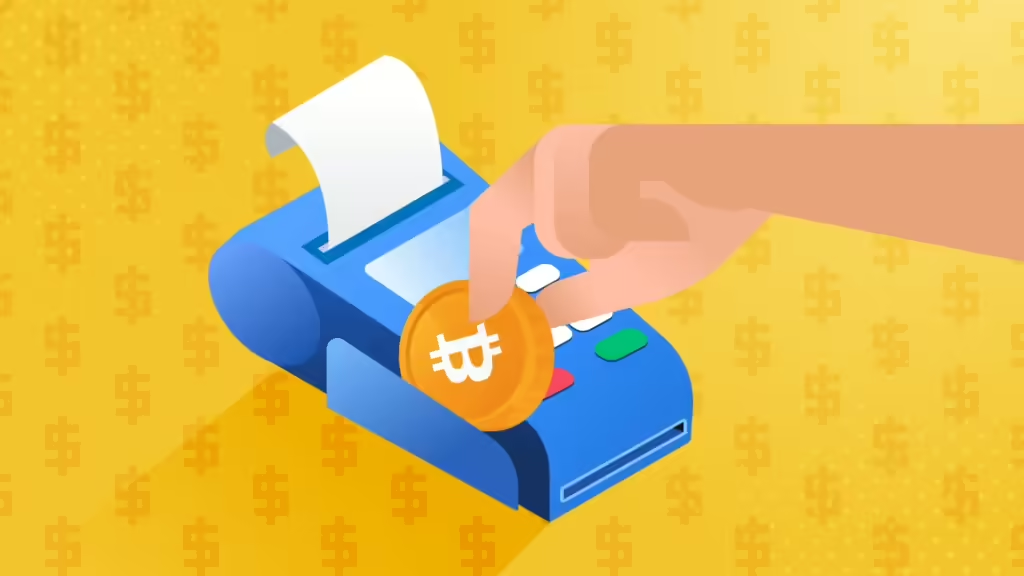In an age where cryptocurrencies are reshaping the financial landscape, stablecoins have emerged as a vital bridge between traditional currencies and digital assets. As their name suggests, stablecoins are designed to maintain a stable value, often pegged to a currency like the U.S. dollar. This makes them a reliable alternative in the often volatile world of cryptocurrencies. With the growing interest in crypto investments and transactions, understanding stablecoins has become more important than ever. They offer the promise of digital convenience without the dramatic swings seen in other cryptocurrencies.
So, are stablecoins truly the future of money? While they hold immense potential, their definitive role in global finance is still unfolding. However, they undoubtedly play a crucial part in today’s evolving economic systems, providing both stability and innovation in the way we handle money.
What Are Stablecoins?
Stablecoins are a fascinating blend of modern innovation and traditional financial stability in the cryptocurrency space. Imagine having the benefits of cryptocurrencies like Bitcoin but without the wild price swings. That’s where stablecoins come into play, acting like the steady ship in the sometimes stormy sea of digital currencies. Let’s take a closer look at what they are and the various types you might encounter.
Definition of Stablecoins
Stablecoins are a unique form of cryptocurrency designed to maintain a stable value by pegging themselves to a reserve of assets. This asset can be anything from traditional fiat currencies like the US dollar to commodities like gold. Unlike other cryptocurrencies known for their volatility, stablecoins aim to offer stability and trust, making them a popular choice for everyday financial transactions.
Why does stability matter? Well, think of stablecoins as the reliable anchor that keeps your digital finances secure in a fluctuating market. Their main purpose is to combine the best of both worlds: crypto innovation with traditional financial stability. This makes them particularly appealing to businesses and individuals who want to avoid the dramatic price shifts typical of other cryptocurrencies.
Related Read: Tether Crackdown on Illicit Crypto Activities: Freezing Over $29 Million in USDT Linked to Cambodian Huione Group
Types of Stablecoins
Stablecoins aren’t a monolithic group. They come in various forms, each with its own mechanism for maintaining stability. Let’s explore the different types:
- Fiat-Collateralized Stablecoins: These are backed by traditional fiat currencies. For every stablecoin issued, there’s a corresponding unit of fiat currency held in reserve. Think of it as depositing cash into a vault and receiving a digital token in return. Examples include Tether (USDT) and USD Coin (USDC), which are pegged to the US dollar.
- Crypto-Collateralized Stablecoins: Instead of fiat reserves, these stablecoins use other cryptocurrencies as collateral. They are usually over-collateralized to account for market volatility. For example, DAI uses Ethereum as backing, which is locked in smart contracts to ensure stability. The idea here is akin to having a safety net made up of digital assets.
- Algorithmic Stablecoins: These don’t rely on any reserves. Instead, they use algorithms and smart contracts to stabilize prices. By automatically increasing or decreasing supply based on demand, they maintain value stability. It’s like using mathematical magic to keep everything in balance, with protocols like TerraUSD as an illustration.
Whether you’re interested in using stablecoins for everyday purchases or considering them as an investment, understanding these categories can help you decide which fits best with your financial goals and preferences. They indeed represent a blend of the old and new, providing a gateway to the futuristic financial landscape.
How Stablecoins Work
Stablecoins have become a hot topic in the financial world, especially in the realm of cryptocurrencies. They’re designed to provide stability, hence the name “stable” coins. But how do they work, and can they really be the future of money?
Mechanism Behind Stablecoins
The mechanism behind stablecoins is what sets them apart from other cryptocurrencies like Bitcoin and Ethereum. These coins are pegged to stable assets such as fiat currencies (like the US Dollar) or commodities (like gold). This keeps their value relatively steady. Here’s how they manage it:
- Collateralization: Some stablecoins maintain reserves of the asset they’re pegged to. So, if a stablecoin is tied to the US Dollar, there’s often an equivalent amount of dollars held in a bank to back it up. This provides a safeguard, ensuring the coin’s value remains consistent.
- Algorithmic Methods: Other stablecoins employ algorithms to manage the supply. If the market price drops below the intended value, the supply of coins is reduced. Conversely, if the price goes up, more coins are introduced into circulation.
- Decentralized Stability: In certain cases, stablecoins use decentralized governance where stakeholders can vote and influence how the peg is maintained.
Whether through collateral or algorithms, these mechanisms help stablecoins maintain an unwavering value, enabling them to be a trustworthy medium of exchange even in the fluctuating world of crypto.
Examples of Popular Stablecoins
Several stablecoins have gained traction and are widely used around the globe. Some of the most popular ones include:
- Tether (USDT): One of the first stablecoins, Tether is widely used and is pegged to the US Dollar. It’s favored for its liquidity and ease of conversion to fiat money.
- USD Coin (USDC): Another dollar-backed stablecoin, USDC offers greater transparency with regular audits. It’s commonly used on various blockchain platforms.
- Dai (DAI): Unlike the others, Dai uses smart contracts on the Ethereum blockchain to maintain its value. It’s pegged to the US Dollar but uniquely relies on overcollateralized crypto assets to maintain the peg.
Each of these coins offers unique attributes that cater to different needs, from liquidity to decentralization.
Stablecoins continue to grow and evolve, reflecting a blend of innovative financial strategies designed to merge the stability of traditional finance with the dynamism of digital currencies.
Benefits of Stablecoins
Stablecoins have become a buzzword in the financial ecosystem for their unique potential to combine the benefits of both cryptocurrencies and traditional fiat currencies. They aim to offer a more stabilized and user-friendly form of digital money that appeals to a broad range of users, from investors to everyday consumers. Let’s explore the key advantages that stablecoins provide.

Price Stability
Unlike volatile cryptocurrencies like Bitcoin or Ethereum, stablecoins are designed to maintain a stable price, usually pegged to a stable asset such as the US dollar or gold. This price stability is achieved through various mechanisms, such as backing the coin with reserves. By using stablecoins, you can avoid the roller-coaster price fluctuations that are common with other cryptocurrencies. They offer a sense of security and predictability, making them a reliable option for those looking to engage in digital finance without the risk of unpredictable losses.
For more detailed information on how stablecoins achieve stability, check out Federal Reserve’s article on price stability.
Improved Liquidity
Stablecoins can significantly enhance liquidity in both the crypto and traditional financial markets. Their ability to be easily convertible between fiat currencies and cryptocurrencies makes them a preferred choice for many traders and investors. This ease of exchange helps maintain a smooth flow of transactions and bridges the gap between traditional and digital finance.
Easy Remittance and Cross-Border Transactions
When it comes to remittances, stablecoins offer a more efficient and cost-effective solution. Their low transaction fees and fast processing times make them ideal for sending money across borders. This provides a viable alternative to traditional banking systems, which are often slow and expensive.
For more insights into how stablecoins are transforming cross-border transactions, check out Forbes’ exploration of their efficiency.
Accessibility for Everyday Users
Stablecoins are breaking down barriers to financial participation, making digital finance accessible to a wider audience. With just a smartphone and internet access, anyone can hold, send, or receive stablecoins. This ease of access is particularly valuable for people in regions with limited banking infrastructure or for those looking for a more inclusive financial system.
By taking advantage of price stability, liquidity, easy transactions, and wide accessibility, stablecoins present a promising alternative to traditional financial systems. Whether you’re an investor or just someone looking to make easier cross-border transactions, stablecoins might just be the key ingredient in the future of finance.
Risks and Challenges
Stablecoins are often seen as the bridge between the volatile world of cryptocurrencies and traditional finance. But despite their appeal, they come with their own set of risks and challenges. Understanding these potential pitfalls is crucial if we are to assess whether stablecoins truly represent the future of money.
Regulatory Concerns
The regulatory environment for stablecoins is continually evolving. Governments around the globe are grappling with how to integrate these digital currencies within existing legal frameworks. The lack of standardized regulations may lead to inconsistent policies that hinder growth and innovation. For example, the Bank for International Settlements has explored various regulatory approaches, yet achieving global coherence remains a challenge.
Potential for Centralization
While cryptocurrencies like Bitcoin are celebrated for decentralization, some stablecoins may steer the crypto space towards centralization. Centralized stablecoins can be subjected to control by a single entity, which contradicts the decentralized ethos of cryptocurrencies. This centralization can create vulnerabilities similar to those found in traditional banking systems.
Security Risks and Hacking
The digital nature of stablecoins makes them targets for hacking and other security threats. From smart contract vulnerabilities to cyber-attacks on exchanges, the risks are manifold. A report by Wired (Published in Jan 2024) highlights how stablecoins have been implicated in a significant proportion of crypto-related crimes. Therefore, robust security protocols are essential to mitigate these risks.
Volatility in Underlying Collateral
Stablecoins aim to maintain stability, but the volatility of their underlying collateral can be problematic. When collateral values fluctuate, stablecoins might lose their peg, leading to potential losses. As Investopedia notes, the stability of these coins is highly dependent on the type and stability of the collateral backing them.
These challenges portray a complex picture. While stablecoins offer exciting possibilities, they also face hurdles that must be overcome to fulfill their potential as a stable alternative to traditional currencies.
Stablecoins vs. Traditional Currencies
Stablecoins are a new kind of digital currency. They promise to bring stability to the often unpredictable world of cryptocurrencies. Unlike traditional currencies, or fiat money like the US dollar or Euro, stablecoins aim to keep their value consistent by being tied to real-world assets. Let’s explore how stablecoins compare to traditional currencies, their potential benefits, and the challenges they face.
Comparison with Fiat Money
Stablecoins and fiat money may both be used for transactions, but they function quite differently. Fiat money is government-issued currency, meaning it’s backed by the trust and authority of a national government. In contrast, stablecoins are usually connected to a reserve of assets. For example, a stablecoin might be linked to a currency like the US dollar, or even to valuable commodities like gold.
- Backing: Fiat is often backed by the economic strength of a country, while stablecoins are backed by physical or digital assets.
- Flexibility: Traditional currencies have centuries of history in facilitating trade, while stablecoins are still gaining traction.
- Control: Central banks manage fiat currencies, which can lead to inflation or deflation. Stablecoins, on the other hand, often rely on blockchain technology to maintain their stability.
Benefits Over Traditional Currencies
Stablecoins have several advantages that might make them appealing in today’s financial world:
- Stability in Value:
- They potentially offer more stability than regular cryptocurrencies, which are known for their volatility.
- Accessibility and Speed:
- Transactions can be quicker and less expensive, especially for cross-border transfers.
- Decentralization:
- Many stablecoins operate on decentralized platforms, giving users more control over their funds.
These benefits are paving the way for a new kind of economic interaction, making stablecoins an intriguing subject for anyone interested in modern finance.
Limitations and Challenges
However, stablecoins aren’t without their hurdles. Here’s what they might face:
- Regulatory Concerns: Regulations vary worldwide, and some warnings have been issued regarding potential misuse in illegal activities.
- Trust in the Reserves: The value of stablecoins depends on the assets backing them, and if not managed properly, they could lose their stability.
- Technological Dependence: As they rely heavily on technology, any security issues or system failures could be catastrophic.
For a deeper dive into these challenges and how they might impact the financial landscape, check out this Brookings Institution article.
In the end, while stablecoins offer new and exciting opportunities, they also bring challenges that need addressing to ensure they fulfill their potential in the future of money.
Use Cases of Stablecoins
Stablecoins have emerged as a significant player within the cryptocurrency landscape, offering a stable value in the often volatile crypto world. Their versatility means they have been adopted in various aspects of the financial ecosystem, transforming how we think about money and transactions. Here’s a closer look at some of the intriguing ways stablecoins are utilized today.
Payments and Remittances
Stablecoins shine brightly in the realm of payments and remittances. They offer a modern alternative to traditional methods, allowing for quick and cost-effective transactions across borders. Imagine sending money to family abroad without the usual bank fees or delays—stablecoins make this a reality. By using blockchain technology, stablecoins ensure transparency and security, making them a reliable choice for global remittances. According to Statista, the use of stablecoins for payments outside the crypto ecosystem has been increasing, highlighting their potential to reshape cross-border transactions.

Decentralized Finance (DeFi) Applications
Stablecoins play a crucial role in the decentralized finance (DeFi) sector. They act as a bridge between traditional fiat currencies and blockchain-based financial services. In the DeFi world, stablecoins are used for lending, borrowing, and earning interest—all without the need for intermediaries like banks. Platforms like CoinDesk highlight the growing number of stablecoin holders, indicating their significant presence in the DeFi landscape. This integration enables users to enjoy the benefits of decentralized finance while avoiding the volatility typically associated with cryptocurrencies.
Hedging Against Volatility in Crypto Markets
Cryptocurrency markets are known for their unpredictability, and stablecoins serve as a safety net for traders and investors. By converting volatile crypto assets into stablecoins, individuals can protect their investments from sudden market swings. It’s like having an umbrella on a rainy day—stablecoins offer a sense of security when the market gets stormy. The Federal Reserve notes the potential of stablecoins as a breakthrough innovation in payments, underscoring their utility in offering stability during market fluctuations.
Integration in E-Commerce
As e-commerce continues to thrive, stablecoins are gradually finding their place in online shopping. They offer an innovative payment solution that is both efficient and secure. By using stablecoins, businesses can minimize transaction costs and reach a global customer base without worrying about currency conversion rates. This integration into e-commerce platforms is gaining momentum, with companies exploring stablecoins as a viable option for digital transactions. As noted by Visa, the demand for stablecoins is steadily rising, making them an appealing choice for retailers aiming to expand their digital presence.
Stablecoins are proving to be a multifaceted tool within the financial industry. Their ability to provide stability, efficiency, and security across various applications makes them an exciting innovation to watch. From payments to DeFi and beyond, these digital assets are shaping the future of money.
Future Trends and Developments
Stablecoins are more than just a blip on the economic radar; they are becoming a formidable force in the financial landscape. As they gain traction, stablecoins offer a unique blend of technology and finance, potentially reshaping how we perceive and use money. Let’s explore some of the key trends and developments likely to shape their future.
Growing Adoption in Mainstream Finance
Stablecoins are not just for crypto enthusiasts anymore. They are stepping into the mainstream finance scene, changing how financial transactions are conducted. Consider this: banks and corporations are actively integrating stablecoins into their operations. Why? Because stablecoins provide the stability of traditional currencies with the speed of digital transactions. According to an article on Harvard Business Review, they are considered a bridge between cryptocurrencies and traditional finance, making them increasingly attractive.
- Banks are exploring stablecoins for cross-border payments, reducing costs and increasing speed.
- Corporations use stablecoins for treasury management, adding a layer of efficiency and transparency.
Technological Advancements and Innovation
The tech landscape is always evolving, and stablecoins are no exception. Innovations are bubbling under the surface, promising to transform how stablecoins function. Take blockchain interoperability, for instance. Emerging tech ensures that different blockchain networks can communicate seamlessly to enhance stability and functionality. A comprehensive piece on Medium outlines key technological trends driving stablecoin development:
- AI Integration: AI can enhance security and fraud detection, making transactions safer.
- Smart Contracts: Automating processes to eliminate human error and increase efficiency.
Potential Regulatory Changes
Regulation is a topic that both excites and concerns stablecoin enthusiasts. As governments catch wind of their increasing prominence, new regulations are inevitable. The World Economic Forum provides a glimpse into the regulatory landscape ahead:
- Increased Oversight: Expect stricter rules around issuance and reserve management.
- Global Standards: International bodies are working on unified standards to ensure stability and compliance.
These changes may initially seem daunting, but they could also pave the way for wider acceptance by ensuring trust and transparency.
Impact on Global Financial Systems
Imagine a world where stablecoins rule the financial seas, like navigators steering toward new commerce horizons. As stablecoins integrate into global markets, they hold potential to disrupt or even replace existing systems. They are not just an addition to the financial toolkit but a catalyst for change, as noted by Boston Fed:
- Monetary Policy: Central banks may need to adjust strategies as stablecoins influence currency demand.
- Financial Inclusion: Stablecoins could offer access to the unbanked, opening financial opportunities for millions.
Understanding the future of stablecoins means acknowledging their transformative power across finance, regulation, and technology. It’s an exciting journey, one where innovation and tradition collide, setting the stage for an evolving financial fabric.

Frequently Asked Questions About Stablecoins
In this section, we explore some of the most common questions surrounding stablecoins. These digital currencies have become a hot topic, sparking curiosity and interest. So, let’s dive into the burning questions people often have about stablecoins.
What Makes Stablecoins Different from Bitcoin?

Stablecoins are often linked with Bitcoin, but they serve different purposes. While Bitcoin is like digital gold, fluctuating in value, stablecoins are known for their stability.
Here’s the main difference:
- Value Stability: Stablecoins are tied to traditional assets like the U.S. dollar, ensuring a consistent value. Bitcoin, on the other hand, can swing wildly in price.
- Purpose: Bitcoin is primarily an investment and store of value, whereas stablecoins are aimed at daily transactions.
- Volatility: While Bitcoin is often volatile, stablecoins are built to remain steady.
In short, think of Bitcoin as a wild ride in a theme park, while stablecoins are a peaceful cruise.
How Do Stablecoins Maintain Their Value?
So, how do stablecoins keep their cool when the crypto seas are stormy? They use various clever methods to maintain their value:
- Fiat-Backed: These stablecoins hold reserves of a fiat currency, like the dollar, to back their value.
- Crypto-Collateralized: Some use other cryptocurrencies as collateral, locking them in contracts to stabilize their price.
- Algorithmic: This type uses algorithms to control supply and demand, akin to monetary policy.
By employing these methods, stablecoins strive to keep their value as predictable as your morning coffee.
Are Stablecoins a Good Investment?
The investment potential of stablecoins is a hot topic. Here’s what you need to consider:
- Pros:
- Stability: Reduced volatility compared to other cryptocurrencies.
- Passive Income: Some offer returns through lending or interest.
- Cons:
- Limited Upside: Lack the explosive growth seen in other cryptos.
- Risks: While rare, events causing a stablecoin to lose its peg can occur, as detailed by Forbes.
Think of stablecoins as a financial anchor. They might not sail you to riches, but they provide a stable harbor in the volatile crypto ocean.
Can Stablecoins Replace Traditional Money?
Could stablecoins become the new standard for money?
- Benefits:
- Speed: Faster than traditional banking systems.
- Flexibility: Easier cross-border transactions.
- Challenges:
- Acceptance: Governments and businesses need to accept them widely.
- Regulation: They must navigate the complex web of traditional financial regulations.
The possibility of stablecoins taking over fiat currency might be as far away as living on Mars, but they certainly have potential in various niches.
What Is the Legal Status of Stablecoins Globally?
Stablecoins exist in a regulatory patchwork worldwide. Here’s a snapshot:
- United States: Requires stablecoins to comply with financial regulations.
- Europe: More stringent compared to other regions, focusing on protecting consumers.
- Asia: Varies significantly, with places like Japan embracing them and others being cautious.
For those eager to explore this further, the Financial Stability Board provides more insight into these regulations.
Stablecoins reside in a legal gray area, trying to find their place in the world’s diverse regulatory landscape. Whether they’ll become a financial beacon or remain a niche product is a story still unfolding.
Conclusion
Stablecoins stand out as a bridge between fiat currencies and the elusive world of cryptocurrencies. Their promise of stability combined with the benefits of digital currency is hard to ignore. With ongoing developments and potential regulatory support, they could reshape financial landscapes and bring new opportunities for underbanked communities.
As technology advances, keeping an eye on stablecoin developments is crucial for anyone invested in the future of finance. Consider how these digital assets can integrate with your financial strategy and stay informed on emerging trends.
The question remains whether stablecoins are the ultimate future of money, but their role in the financial system is undoubtedly growing. Thanks for reading, and feel free to share your thoughts on how stablecoins might impact your financial decisions.








![How Blockchain Analysis Tools Catch Fraudulent Transactions [2024 Update] How Blockchain Analysis Tools Catch Fraudulent Transactions [2024 Update]](https://hashherald.com/wp-content/uploads/2024/08/blockchain-analysis-tool-organic-intro-218x150.jpg)
![What Is Wrapped Crypto? [2024 Guide for Investors] what is wrapped crypto](https://hashherald.com/wp-content/uploads/2024/08/wrapped-crypto-218x150.jpeg)



